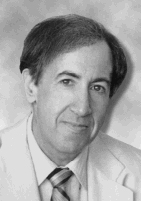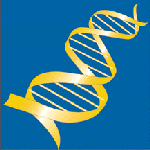
Human Genome Research: Decoding DNA As head of DOE's Office of Health and Environmental Research, Charles DeLisi played a pivotal role in proposing and initiating the Human Genome Program in 1986. Resources with Additional Information The U.S. Department of Energy (DOE) has historically been active in supporting human genome research. On September 10, 2003, Secretary of Energy Spencer Abraham presented the Secretary's Gold Award to Aristides Patrinos and Francis Collins for their leadership of the government's Human Genome Project. At DOE's Office of Science, Dr. Patrinos is the Associate Director for Biological and Environmental Research. He has been a researcher at the department's Oak Ridge National Laboratory and Brookhaven National Laboratory. DOE and Secretary of Energy Spencer Abraham announced the celebration of the fiftieth anniversary of the description of the DNA double helix during April 2003. James D. Watson, Francis Crick, and Maurice Wilkins were awarded the 1962 Nobel Prize in Physiology or Medicine for their research in this area. On June 26, 2000, President Clinton, leaders of the Human Genome Project (HGP) and representatives of the biotechnology company Celera announced the completion of a "working draft" reference DNA sequence of the human genome. The achievement provides scientists worldwide with a road map to an estimated 90% of genes on every chromosome.  Previously, on April 13, 2000, U.S. Secretary of Energy Bill Richardson announced that researchers at DOE's Joint Genome Institute in Walnut Creek, California, had decoded in draft form the genetic information on human chromosomes 5, 16, and 19. The chromosomes contain an estimated 10–15,000 genes, including those whose defects may lead to genetically linked diseases such as certain forms of kidney disease, prostate and colorectal cancer, leukemia, hypertension, diabetes, and atherosclerosis. The human genome is the full complement of genetic material in a human cell; it contains instructions for making all the protein molecules for all the different kinds of cells of the human body – neurons in the brain, red blood cells, bone tissue, liver cells, etc. In decoding DNA, researchers determine the "sequence" or exact order of the individual chemical building blocks, or bases, that make up the DNA. The three chromosomes sequenced by Department of Energy researchers contain more than 300 million base pairs, or an estimated 11 percent of the total human genome. Resources with Additional InformationAdditional information on the Human Genome Project and the Department's Human Genome Program is available in full-text DOE reports and on the Web. Documents:Human Genome Program Report. Part 1, Overview and Progress Human Genome Program Report. Part 2, 1996 Research Abstracts Origins of the Human Genome Project Primer on Molecular Genetics. DOE Human Genome Program A Vital Legacy: Biological and Environmental Research in the Atomic Age Web pages:History of the DOE Human Genome Program Human Genome Project Information genomes.energy.gov - Genome Programs of the U.S. Department of Energy Office of Science Human Genome Working Draft Sequence Molecular Structure of Nucleic Acids, Nature 171, 1953 Watson and Crick Describe Structure of DNA, 1953, PBS, A Science Odyssey: People and Discoveries |


 |
Information
Bridge • Energy
Citations Database • E-print
Network • R&D
Accomplishments
About OSTI Science.gov • USA.gov • USAJOBS • Grants • Regulations.gov |
|---|